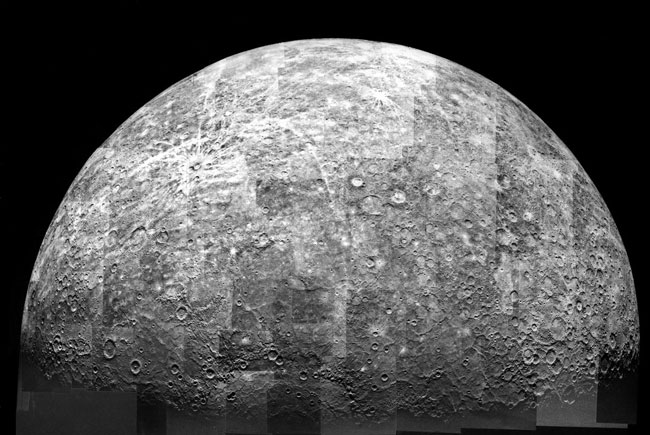
|
Credit & Copyright: Mariner 10,
NASA
Explanation:
After just passing Mercury, the robot spacecraft Mariner 10 looked back.
The
above picture is what it saw.
Mercury,
the closest planet to the
Sun, is heavily cratered much like
Earth's Moon.
As Mercury slowly rotates, its surface
temperature varies from an unbearably cold -180 degrees
Celsius in the half facing away from the Sun,
to an unbearably hot 400 degrees
Celsius
in the half facing toward the Sun.
Mercury is slightly larger than
Earth's Moon and much
denser.
The Mariner 10 spacecraft swooped by
Mercury three times in its journey around the inner
Solar System in the mid-1970s.
This outbound view has similarities to the
inbound view.
Nearly half of
Mercury's surface
has yet to be photographed in detail.
|
January February March April May June July August September October November December |
| ||||||||||||||||||||||||||||||||||||||||||||||||
NASA Web Site Statements, Warnings, and Disclaimers
NASA Official: Jay Norris. Specific rights apply.
A service of: LHEA at NASA / GSFC
& Michigan Tech. U.
Based on Astronomy Picture
Of the Day
Publications with keywords: Mercury - Solar System - Mariner 10
Publications with words: Mercury - Solar System - Mariner 10
See also:
- APOD: 2025 September 14 Á Planets of the Solar System: Tilts and Spins
- MESSENGER s Last Day on Mercury
- APOD: 2025 March 31 Á Parker: The Solar System from Near the Sun
- APOD: 2024 September 16 Á Mercurys Vivaldi Crater from BepiColombo
- Solar System Family Portrait
- APOD: 2023 March 26 Á Wanderers
- Planets of the Solar System: Tilts and Spins
